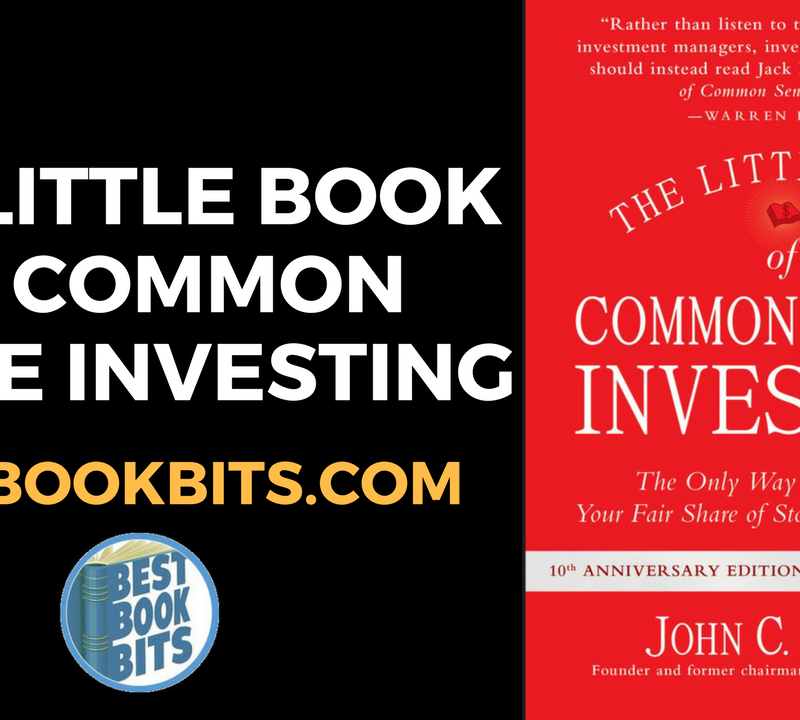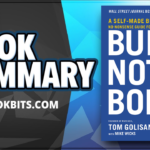♣ CLICK THIS TO STOP TRYING TO ACHIEVE YOUR GOALS BY YOURSELF AND BE COACHED TODAY HERE
♥ CLICK THIS TO DOWNLOAD THIS FREE PDF SUMMARY HERE
♦ CLICK THESE FOR THE FOLLOWING Book | Summaries | Course
YouTube |Spotify | Instagram | Facebook | Newsletter | Website
Chapter 1: Cryptocurrency Basics & The Blockchain
What Is A Cryptocurrency?
“A cryptocurrency is a form of digital money that uses encryption to verify transactions between peers on a distributed ledger in a decentralized network”.
What does this mean? basically cryptocurrencies allow two unknown people to safely transfer money to each other from different locations without relying on a bank or government (decentralized network).
Benefits of Cryptocurrencies:
No clearing house required
It’s low cost and efficient to move
A market value can be placed on the currency
Handles the double spending problem
Risks of Cryptocurrencies:
Financing of illegal activities
High risk of loss
Increased regulation
High volatility
The First Cryptocurrency – Bitcoin
Bitcoin is the first cryptocurrency created in 2009 by the pseudonymous ‘Satoshi Nakamoto’ and is a distributed peer-to-peer payment system.
It’s known as a “digital cash” system that allows you to securely store and move money around the world without the requirement of banks or government authorities.
The Blockchain
A blockchain is essentially a database of records on a public ledger containing all transactions that have been executed and shared among participating parties.
Each transaction in this public ledger is verified by a consensus of a majority of the participants in the system. Once transaction or information is entered on the blockchain, it cannot be tampered with or erased.
Bitcoin’s Blockchain
Bitcoin’s blockchain maintains a chronologically-ordered, time-stamped global ledger file of all transactions from the very start of its operation since 2009.
Since only you can spend your Bitcoins, each wallet is protected by a special cryptographic method using a unique pair of keys: a Public key and Private key.
Bitcoin Mining
About every ten minutes, a “miner” who owns a node/computer on the network will try to solve a “block” that contains the latest transaction data in it, using cryptographic hash functions.
Once a miner solves the block, they broadcast the solution to all the miners in the network and are rewarded with Bitcoins.
Chapter 2: Bitcoin Wallets & Buying Bitcoin
A Bitcoin wallet is like a bank account – it stores, secures and allows you to send and receive Bitcoins. In particular, a wallet stores your private keys and public keys. The public key is used to send/receive money and the private key is what actually gives you access to your account.
Types of Bitcoin Wallets
Hot Wallet – A “hot wallet” refers to any kind of online storage wallet.
Cold Wallet – A “cold wallet” refers to any kind of offline storage wallet.
1. Software Wallets:
Electrum
Exodus
MyCelium
Copay
2. Online Wallets:
Blockchain.info
Coinbase
3. Hardware wallets
4. Paper Wallets
Factors To Consider When Choosing A Wallet:
Frequency of use
Ease of use
Anonymity
Buying Bitcoin Anywhere In The World
There are a lot of sites shared in this chapter, and it’s sorted by places; such as U.S., Europe, Russia, China, Japan etc..
Chapter 3: Top 6 Cryptocurrencies
Bitcoin
Ethereum
Litecoin
Ripple
NEO (Formerly Antshares)
Monero
Chapter 4: Cryptocurrency Trading Foundation
Trading the markets, be it equities, forex or cryptocurrencies is an industry where you compete with so many incredibly smart people – all fighting to survive or become very rich.
Some people trade for the wrong reasons:
Trading for “easy money”
Trading for “entertainment”
Trading on “ego”
Trade because you..
Are tired of paying for bad financial advice
Want to practice crypto trading to make some extra income or
Want to invest in a long term crypto portfolio for growth
Types Of Traders
Scalpers
Day traders
Swing traders
Position traders
Trading Psychology
“Be fearful when others are greedy, and greedy when others are fearful” – Warren Buffett
When the market goes up you’re happy as pie, you feel smart and even consider yourself a “genius”. When it goes down, you start to doubt yourself and feel uneasy.
As a trader, managing your emotions requires self awareness, acknowledging the risk ahead of time and sizing your position to reflect your emotional capacity.
The 3 Enemies of Trading
Fear
Greed
Impatience
The 7 Habits Of A Successful Trader
Discipline
Patience
Keep Learning
Review your trades
Courage
Remain Calm
Humbleness
Best Cryptocurrency Trading Exchanges
To recap, cryptocurrency exchanges are websites where you can buy, sell or exchange cryptocurrencies like BTC, ETH and LTC.
To actively trade in other alt coins, you will need a cryptocurrency trading exchange that offers the ability to trade a variety of coins.
GDAX
Bittrex
Bitfinex
Poloniex
Kraken
Crypto Margin Trading – Going Long or Short
Margin trading allows you to trade with borrowed money and have a larger trading position in the market without having to spend your own money. It’s a higher risk trading strategy and not recommended for everyone.
Chapter 5: Crypto Trading Plan & Building A Diversified Portfolio
Whether you trade in cryptocurrencies for the short term to earn extra income or invest in cryptocurrencies to build a portfolio – you will need a trading plan or investment strategy.
There are 2 main strategies you can use:
Crypto Trading Plan – this plan is geared towards swing / short term trading and allows you to take advantage of market swings by making small profits along the way.
Building a Diversified Crypto Portfolio – The goal here is to build a diversified crypto portfolio of quality coins by purchasing them on the dips and “dollar cost average” in to lower the average cost per coin and position your portfolio for growth.
Rules for crypto trading plan:
Don’t short Bitcoin
Dollar cost average (DCA) in
Do not panic
If you are 100% invested
Set stop or limit orders:
A stop order
A limit order
Building A Diversified Crypto Portfolio
This strategy focuses on the long game by building a diversified crypto portfolio of quality coins where you dollar cost average in and buy on dips. You don’t put all your eggs (or coins) in one basket to protect against market fluctuations.
Coin Allocation For a Growth Portfolio
Instead of recommending specific coins, I have a rule of thumb on how much of each coin market capitalization category you should allocate your portfolio in. It’s also advisable that you conduct your own research to validate the quality of the coin (refer to the next chapter “Fundamental Analysis For Cryptocurrencies & ICOs”).
Rules For Building A Portfolio:
Diversify coins in your portfolio
Do your research
Manage your emotions
How To Build A Cryptocurrency Portfolio With $500
Before you begin, there’s 2 main requirements you need to get going:
A minimum of $500 investment
Have your exchange logins and wallet addresses ready
Chapter 6: Crypto Fundamental Analysis & Initial Coin Offerings (ICOs)
In traditional investing, fundamental analysis is: “the evaluation of a company’s financial health and viability – by looking at economic and business factors to determine a security’s value”
Fundamental Analysis
Here are a few factors to consider when taking a position in alt coins or investing in ICOs:
User adoption
Developer and community activity
Technological specifications and features of the coin
Market capitalization
Distribution or supply of coins
Rate of inflation
♣ CLICK THIS TO STOP TRYING TO ACHIEVE YOUR GOALS BY YOURSELF AND BE COACHED TODAY HERE
♥ CLICK THIS TO DOWNLOAD THIS FREE PDF SUMMARY HERE
♦ CLICK THESE FOR THE FOLLOWING Book | Summaries | Course
YouTube |Spotify | Instagram | Facebook | Newsletter | Website
Coin’s volume in trading
News events
Investing In Profitable ICOs
Initial Coin Offerings (ICOs) are a powerful tool for startups to raise capital by selling “tokens”. These token sales help create decentralized communities, kickstart network effects and provide capital for creators in the development of their technology.
On that note, investing in ICOs and turning a profit is still possible using the “Fundamental Research & ICO checklist” provided towards the end of this chapter with a few ICO specific things to keep in mind:
The coin/token must have a clear purpose
Caution on ICOs with high amount of capital to raise
An oversupply of tokens without sufficient demand
Look for a high quality website
Look for an experienced and qualified team
Find out where the company is located
Hype on social media or celebrity endorsements
List of ICO Resources
Chapter 8: Technical Analysis
Whilst fundamental analysis focuses on establishing if a coin is over or undervalued, technical analysis looks at its historical price charts to measure buying/selling activity and to forecast future price movements.
Price Fields
Technical analysis is based almost entirely on the analysis of price and volume.
Volatility
Cryptocurrency and Bitcoin in particular has a reputation for being highly volatility. Volatility is defined as the price fluctuation of a given asset over time.
Support & Resistance
Support and resistance forms the basis for nearly every technical indicator because it indicates the supply and demand of a coin.
Resistance becomes support
When a resistance level is successfully penetrated, that level becomes a support level. Similarly, when a support level is successfully penetrated, that level becomes a resistance level.
Trend Lines
A trend differs from support/resistance levels in that trends represent change, whereas support/resistance levels represent barriers to change.
Trend lines helps identify the overall direction of where the coin is moving. Prices are said to be “trending” when they are heading in a clear direction.
Trading Volume
Trading volume plays an important role in evaluating price trends. Generally, high trading volume points to stronger price trends. Likewise low trading volume points to weaker price trends.
Moving Averages
A technical indicator used to simplify the trend of a coin is “moving averages”.
There are several types of moving averages, however the main ones used are:
Simple Moving Average (SMA)
Exponential Moving Average (EMA)
Moving Average Convergence / Divergence (MACD)
Relative Strength Index
The Relative Strength Index (RSI) is a momentum indicator used to identify whether prices are at temporary extremes and likely to reverse. It is primarily used in an attempt to identify overbought or oversold trading in a coin.
Stochastic RSI
The Stochastic RSI indicator is used to identify overbought and oversold conditions – typically used for scalping and intra-day trading. It’s a momentum indicator that calculates a value between 0 and 1 which is then plotted as a line. For trading purposes, the lines are set at 0.8 and 0.20.
Head and Shoulders Patterns
The head-and-shoulders pattern is not an indicator, it’s a trend reversal pattern. There are two types of heads and shoulders pattern: “head-and-shoulders top” and “head-and-shoulders bottom/inverse”
Double Tops or Bottoms Patterns
Like the head-and-shoulders pattern, the double top or bottom forecasts a trend reversal. Spotting this chart pattern is fairly simple.
For a double top, a coin will test a specific price level (usually at the resistance line) on two occasions. Double top patterns occurs after an uptrend and indicates future selling.
Fibonacci Retracement
In trading, Fibonacci retracements are often used to identify trends and understand price action. If you’re new to Fibonacci, it’s a sequence of numbers, after 0 and 1, where each number is the sum of the two prior numbers.
The sequence is as follows: 0, 1, 1, 2, 3, 5, 8, 13, 21, 34, 55, 89, 144, 233, 377, 610 and so on
Identifying Bull Trend Reversals
My goal is to always buy low, sell high and very rarely do I long or short margin trade alt coins as I want to minimize risk.
Mostly I’m looking for early signs of bull trend reversals using 5 steps:
Step 1: Look for a capitulation candles in the downward trend:
Where traders bought high, gave up and sell low.
Usually a deep red candle with a long wick with high trading volume.
The deep red candle occurs later in the downward trend.
Step 2: The downward trend re-tests the previous support line
Step 3: A breakout of the downward trend
With a dominance of green candle forming uptrend
Step 4: A series of higher lows
Step 5: An inverse head and shoulder pattern appears
Full confirmation of the trend reversal appears in the breakout of the neck line of the head and shoulders pattern.
♣ CLICK THIS TO STOP TRYING TO ACHIEVE YOUR GOALS BY YOURSELF AND BE COACHED TODAY HERE
♥ CLICK THIS TO DOWNLOAD THIS FREE PDF SUMMARY HERE
♦ CLICK THESE FOR THE FOLLOWING Book | Summaries | Course
YouTube |Spotify | Instagram | Facebook | Newsletter | Website













